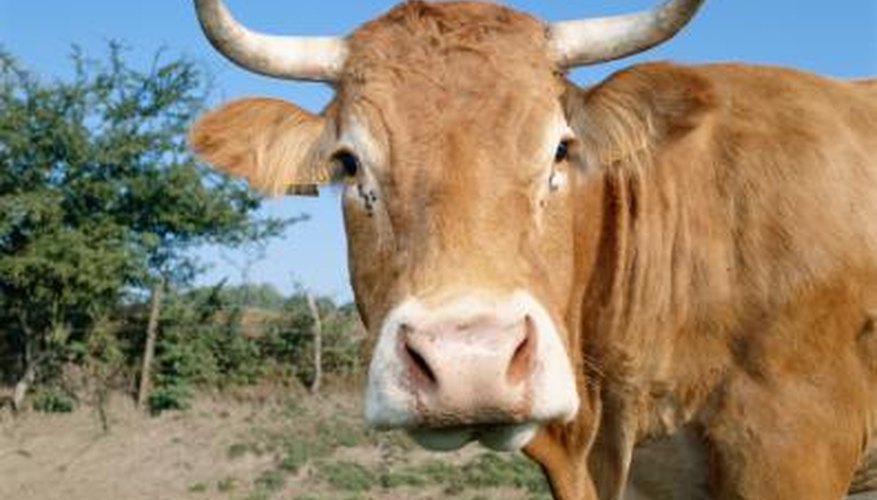Although Americans mostly grow up on steaks and roasts, almost every part of a steer can be cooked and eaten in one way or another. In the days before supermarkets and refrigeration, large animals such as cattle were slaughtered infrequently, and most households were careful to use every part of an animal once it was killed. In most of the world dishes, the less-glamorous parts of an animal --- such as the head --- are still treasured. For example, cows' noses often are considered regional specialities.
- Although Americans mostly grow up on steaks and roasts, almost every part of a steer can be cooked and eaten in one way or another.
- In the days before supermarkets and refrigeration, large animals such as cattle were slaughtered infrequently, and most households were careful to use every part of an animal once it was killed.
Rinse the nose inside and out with cold, running water and pat it dry with paper towels.
Simmer the nose in a large pot of salted water for 45 minutes. Cool it under cold, running water.
Check your cow's nose for any remaining bristles. Boil the nose and remove the bristles with a pair of tweezers. The nose is now ready for cooking.
- Check your cow's nose for any remaining bristles.
Cover the nose with water or beef broth and simmer it with onions, garlic, peppercorns, bay leaf and a 1/4 cup cider vinegar. Remove it from the broth when the meat is tender enough to fall off the bone.
Debone the meat and slice the muzzle into thin strips. Season it with salt and pepper. Layer the meat into a glass baking dish.
Strain the cooking broth and reduce it by half, then pour it over the nose meat. Press it down firmly with a fork to remove any air bubbles. Refrigerate the nose until it gels.
- Strain the cooking broth and reduce it by half, then pour it over the nose meat.
Slice and serve the cow's nose cold as part of a buffet. Alternately, dice the jellied nose and serve it on crackers or small rounds of toast as a canape.
Slow-cooked beef nose, served in peanut sauce, is a traditional speciality of the city of Surabaya, Indonesia. Serve it over noodles.
Simmer the cow's nose and tripe together in a tomato-based sauce for a traditional dish served in Spanish tapas bars.
Slow-cook pig's feet and cow's nose for a taste of traditional Neapolitan street food.
TIP
The same method can be used for moose or elk noses. The cow's nose includes the upper jawbone and is properly called the "snout."
